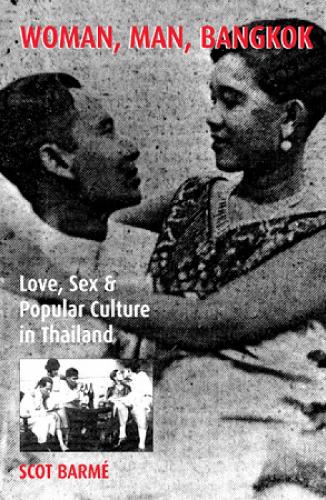
Woman, Man, Bangkok: Love, Sex, and Popular Culture in Thailand
(Paperback)
Publishing Details
Woman, Man, Bangkok: Love, Sex, and Popular Culture in Thailand
By (Author) Scot Barm
Bloomsbury Publishing PLC
Rowman & Littlefield Publishers
14th May 2002
United States
Classifications
General
Non Fiction
Cultural studies
Regional / International studies
303.409593
Physical Properties
Paperback
288
Width 148mm, Height 227mm, Spine 17mm
372g
Description
During the early decades of the 20th century, Thailand's capital, Bangkok, took on an increasingly cosmopolitan character, a development fuelled both by global economic forces and a local revolution in communications. The 1920s were a particularly dynamic period of social and cultural transformation that had a profound impact on the development of Thai modernity. This book examines the growth of a polyphonous and often vociferous Thai public, a public that used a range of new media outlets to express themselves and clamour for a more just and equitable social order. Scot Barme mines a rich lode of cultural ephemera found in popular newspapers, magazines, novels, short stories, film booklets and cartoons to create a cultural history of early modern Thailand that moves beyond conventional, elite-based historical studies of the period. By focusing on such controversies and conflicts as the status of women, relations between the sexes, class antagonisms and the growth of a commercial mass culture, this book offers a new interpretation of the key decade of the 1920s and its significance for contemporary Thailand.
Reviews
Barm performs a monumental task. He peoples Siam, bringing it to life with a vibrancy and immediacy by parading before us the issues and images that roused the population of early 20th century Bangkok. * Journal of Southeast Asian Studies *
Unlike any other English or Thai language history, Barms study puts you on the ground in the always scintillating and often over-stimulating Bangkok, a city characterized by moral and economic extremes as early as the 1910s. His book offers the firsturban social history of Bangkok that also chronicles the formation of Siams burgeoning middle class and its ideological stances. The sheer amount of detail Barm gleaned from Thai-language newspapers, political cartoons, magazines, film booklets, novels, short stories, and other documentation, make his book a cornucopia of the quotidian. Barm performs a monumental task. He peoples Siam, bringing it to life with a vibrancy and immediacy by parading before us the issues and images that roused thepopulation of early 20th century Bangkok. Tamara Looss -- Tamara Loos * Journal of Southeast Asian Studies *
Truly path-breaking. Men still expect to dominate lots of women, while women are expected to be passive and pure. That's why 1920s Bangkok and its gender debates still seem so familiar. Great book. -- Chris Baker, Bangkok Post
[A] fresh look at the last decades of absolutist rule....Barme's [be sure to get accent in] prose is very accessible, and with its attractive graphics, this paperback version will be a useful addition to courses on modern Southeast Asia. * American Historical Review *
Woman, Man, Bangkok is an important contribution to an understanding of the intersections of gender, class, sexuality, and nationlism and analytically situates this intersection within an important phase in Thailand's history. * Journal of Asian Studies *
Scot Barme's study of Bangkok is pathbreaking. By focusing on cinema, the press, cartoons, gender, and sexuality a century ago, he produces an original and fascinating picture of social and political change. There is no comparable work on Thailand's social history. No historian will want to ignore his story or his methods. No one will read this book and not have their image of Bangkok and Thailand changed. -- Kevin Hewison, City University of Hong Kong
Unlike any other English or Thai language history, Barms study puts you on the
ground in the always scintillating and often over-stimulating Bangkok, a city
characterized by moral and economic extremes as early as the 1910s. His book
offers the first urban social history of Bangkok that also chronicles the
formation of Siams burgeoning middle class and its ideological stances. The
sheer amount of detail Barm gleaned from Thai-language newspapers, political
cartoons, magazines, film booklets, novels, short stories, and other
documentation, make his book a cornucopia of the quotidian. Barm performs a
monumental task. He peoples Siam, bringing it to life with a vibrancy and
immediacy by parading before us the issues and images that roused the population
of early 20th century Bangkok.
Tamara Loos
Author Bio
Scot Barme is visiting fellow in the division of Pacific and Asian history, RSPAS, Australian National University.
